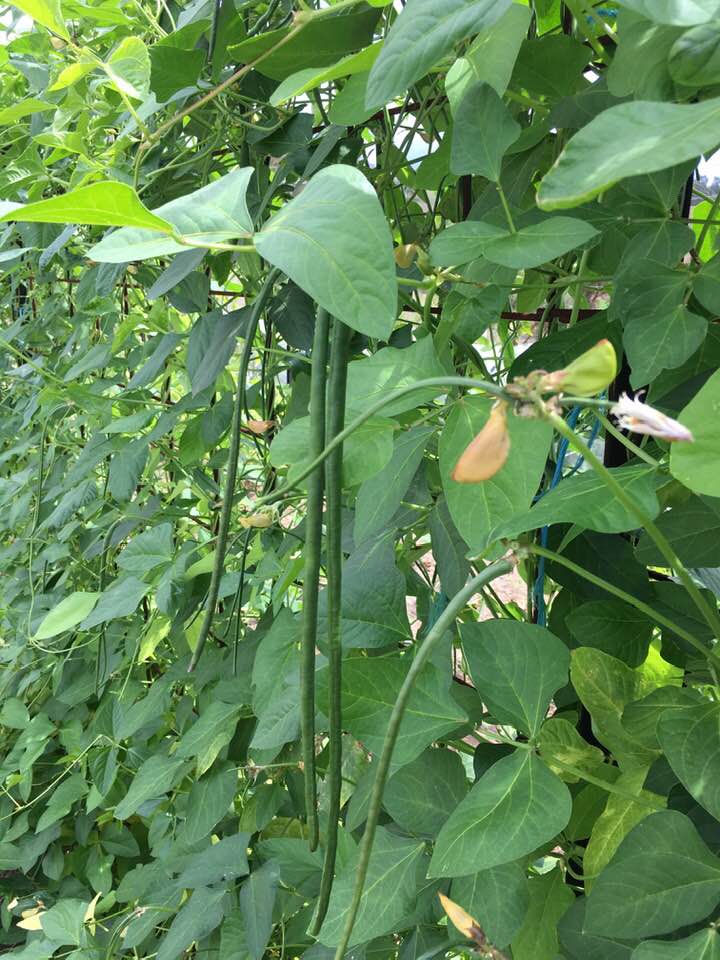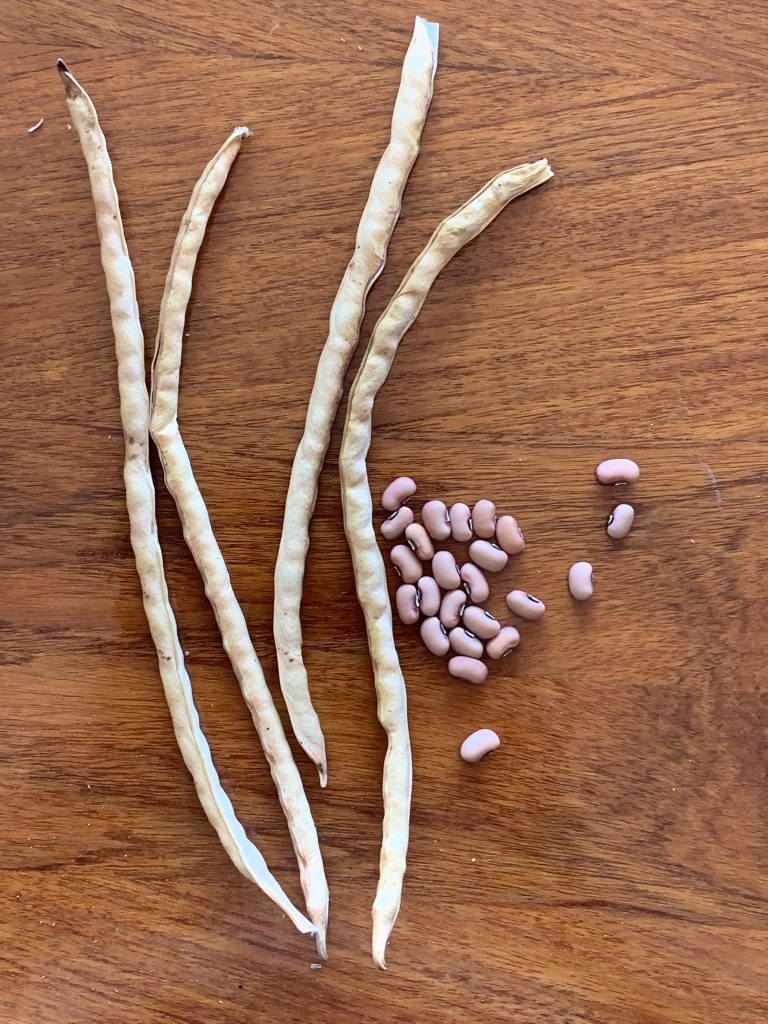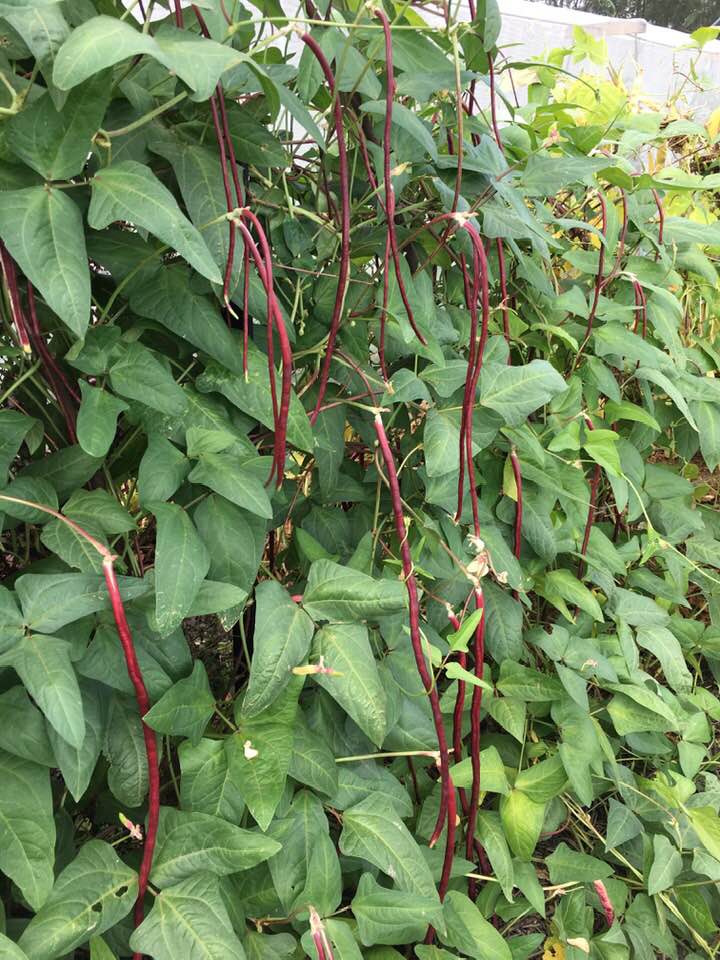Botanical name : Vigna unguiculata
Common name : Cow pea, Asparagus bean, Snake bean, Black Eyed bean, Yard long bean
Easy for seed saving
Lifecycle: Annual
Pollination: Self-pollinated, occasionally insect pollinated
Mating system: Perfect flowers
Suggested spacing: Same as for eating production
Seed specific requirements: none
Isolation distance: 2 to 5 metres
Population size: 5 to 10 plants. A single plant will provide viable seed.
Seed maturity: Seeds are mature when the pods change colour to brown.
Processing method: Break seeds out of the pods by hand or by threshing
Expected seed viability: 3 years
Images



Cultivation
Cowpeas and snake beans are warmth loving annuals. Climbing forms are best grown on a trellis. They should all be planted when the soil is warm. The are not frost tolerant.
Growing for seed
Cowpeas, black-eyed beans and snake beans are all very straight-forward to grow for seed. The pods are left on the plant until they change colour.
Keep plants far enough apart so that they cannot physically intermingle making identification of which plant mature pods belong to difficult. It is suggested that growers try to keep their bean varieties around 2 to 5 metres apart which also ensures ants and other insects that may cut or push their way into the flowers aren’t able to easily access nearby flowers and accidentally transfer pollen. There is a fairly low risk of this occurring, and growers can often achieve good results with no isolation at all.
Selection
Any plants showing disease should not have seed collected from them. Growing a number of plants of the one variety will also allow growers to inspect for any plants that vary from the desired traits and avoid saving seed from those plants.
Growers should check that seed is being harvested from plants which are the correct plant form (flower colour; pod colour, shape and size; and seed colour and size) for what is expected for that variety. Plants that vary from the variety being conserved should not have seed collected from them. Variations aren’t often seen, but we should be aware that they can happen.
Harvest
The easiest way to identify when to harvest is to leave the pods on the plants until they have dried to brown pods. If needed, pods can be harvested when they change colour.
Because of the relatively long production period for these types of beans it is usually better to hand harvest individual pods as they ripen rather than trying to cut and dry an entire plant.
Be vigilant and collect any dried pods before rain. Once beans have dried on the plant, significant rain very easily causes mould to grow on the pods and seeds and these should not then be saved for replanting.
Processing
Once the pods are dry they can be broken open to get the seeds out. This can be done by hand for each pod. Alternatively the usual methods of walking on the pods or using a threshing machine can be tried. If the seed is dry it is difficult to damage it by threshing. Do not be tempted to try threshing or walking on the plant material before it is dried as the seed could be damaged while it is still moist and soft.
Contributors
Liz Worth, Nellie Pryke
